Blame
| a03a35 | João Lopes | 2025-03-13 12:20:37 | 1 | IIP Homework n°1 |
| 2 | ||||
| 3 | > **Homework** **n°1** **:** **HydraulicTurbines** *Letourneau* *Lyana* |
|||
| 4 | > */* *2021257413* |
|||
| 5 | > |
|||
| 6 | > *Itegration* *and* *Intensification* *of* *Process* |
|||
| 7 | ||||
| 8 | Introduction |
|||
| 9 | ||||
| 10 | I will complete the page on hydraulic turbines, I will refresh or |
|||
| 11 | complete the data on the page. |
|||
| 12 | ||||
| 13 | And focusing my research and additions on tidal turbines. And finally I |
|||
| 14 | will also add a section on hydraulics inPortugal. |
|||
| 15 | ||||
| 16 | HydraulicsTurbines |
|||
| 17 | ||||
| 18 | **Hydroelectricity** **in** **the** **history** **and** **in** **the** |
|||
| 19 | **world** |
|||
| 20 | ||||
| 21 | The use of hydraulic turbines began a long time before hydroelectricity: |
|||
| 22 | the first watermills appeared in the 1st century, between Greece and |
|||
| 23 | Turkey, before reaching the Roman and ChineseEmpires in the 3rd century. |
|||
| 24 | Ahydraulic turbine is a rotating machine that produces mechanical energy |
|||
| 25 | from moving water, in lakes, rivers or with the tide. So it is a machine |
|||
| 26 | that converts kinetic energy and potential energy of water into |
|||
| 27 | mechanical work. It is the essential component of hydroelectric power |
|||
| 28 | stations intended to produce electricity from a flow of water. |
|||
| 29 | Subsequently, its use was adapted to directly drive machines in |
|||
| 30 | factories until they were practically used only to drive electric |
|||
| 31 | generators. |
|||
| 32 | ||||
| 33 | Hydroelectric energy is one of the oldest sources of electricity |
|||
| 34 | production, and therefore is very technologically developed. It is today |
|||
| 35 | by farthe leadingrenewable electrical energy, producing nearly |
|||
| 36 | 83%ofrenewable electricity and 16% of global energy in the world. |
|||
| 37 | Hydroelectricity is not the “out of date” science that we imagine. |
|||
| 38 | Today, hydraulic machines are high-tech objects that must meet |
|||
| 39 | increasingly stringent performance constraints. \[1\] |
|||
| 40 | ||||
| 41 | ||||
| 459d06 | João Lopes | 2025-03-13 12:25:49 | 42 | 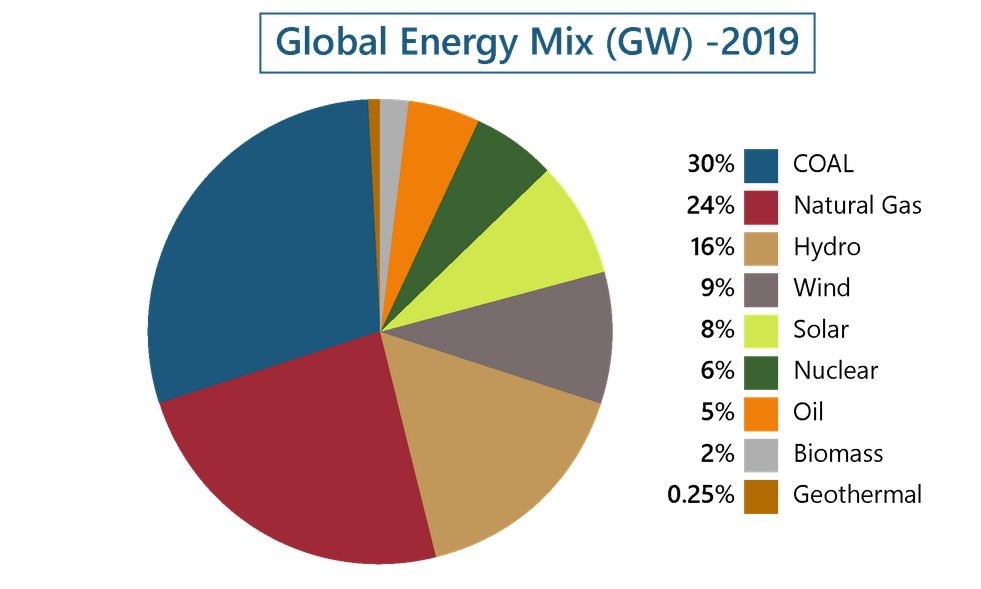 |
| a03a35 | João Lopes | 2025-03-13 12:20:37 | 43 | |
| 44 | > *Figure* *1:* *Global* *Energy* *Mix* *in* *2019* |
|||
| 45 | > [*<u>link</u>*](https://powertechresearch.com/competing-during-transformation-how-private-equity-firms-are-utilizing-market-research-in-energy-sector/) |
|||
| 46 | ||||
| 47 | **Constitution** **and** **Operating** **Principles** |
|||
| 48 | ||||
| 49 | The water present in a tank located at a higher level (with more energy) |
|||
| 50 | is circulated to a lower level (with less energy) passing through a set |
|||
| 51 | of curved blades, nozzles or injectors that transform this energy from |
|||
| 52 | the water into movement of a rotor,removingenergyand speed from the |
|||
| 53 | water. These blades can be staticor fixed on therotor, both being |
|||
| 54 | adjustable so that the flowand power generated can be controlled, |
|||
| 55 | according to the rotation speed. For its part, the rotoris supported |
|||
| 56 | axially by thrust and counter thrust bearings and radially by guide |
|||
| 57 | bearings. |
|||
| 58 | ||||
| 59 | The pipe normally has a final diameter greater than the initial one, in |
|||
| 60 | order to promote the exit of water with a lower velocity \[2\]. |
|||
| 61 | ||||
| 62 | To better understand how a turbine works, consider a Francis turbine, |
|||
| 63 | illustrated in this video: |
|||
| 64 | ||||
| 65 | [<u>video</u>](https://www.youtube.com/watch?v=Q0F-9HciA-A) |
|||
| 66 | ||||
| 67 | **Types** **of** **turbines** |
|||
| 68 | ||||
| 69 | Different types of turbines are developed to extract mechanical energy |
|||
| 70 | from hydraulic energy to generate electricity. They are severalwaysto |
|||
| 71 | classify turbines, but a common way isto classify with the mode ofenergy |
|||
| 72 | exchange between the water and the turbines. \[1\] |
|||
| 73 | ||||
| 74 | *Impulse* *Turbines* |
|||
| 75 | ||||
| 76 | If the turbine wheel is driven by the kinetic energy of the fluid that |
|||
| 77 | strikes the turbine blades through the nozzle or otherwise, the turbine |
|||
| 78 | is known as an impulse turbine. |
|||
| 79 | ||||
| 80 | > These types of turbines are usually suitable for high head and low |
|||
| 81 | > flow rates. |
|||
| 82 | ||||
| 83 | *Reaction* *Turbines* |
|||
| 84 | ||||
| 85 | If the sum of potential and kinetic energy of water which are due to the |
|||
| 86 | pressure and velocity, respectively cause the turbine blades to rotate, |
|||
| 87 | the turbine is classified as a reaction turbine. In these types of |
|||
| 88 | turbines, all the turbine is immersed in water and changes in water |
|||
| 89 | pressure with the kinetic energy of the water cause power exchange. |
|||
| 90 | ||||
| 91 | > Those turbines are usually at lower heads and higher flow rates than |
|||
| 92 | > impulse turbines. |
|||
| 93 | > |
|||
| 94 | > 2 |
|||
| 95 | ||||
| 002c04 | João Lopes | 2025-03-13 12:29:44 | 96 | 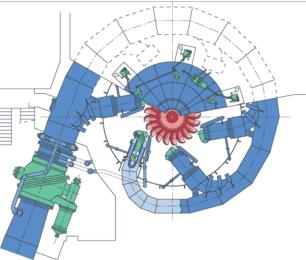 |
| 97 | style="width:1.53153in;height:1.30417in" />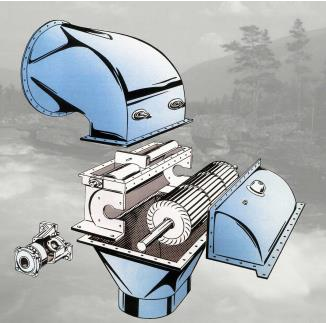 |
|||
| 98 | style="width:1.63125in;height:1.61736in" />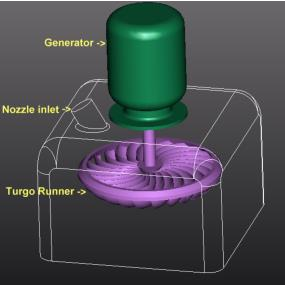 |
|||
| 99 | style="width:1.42639in;height:1.42778in" />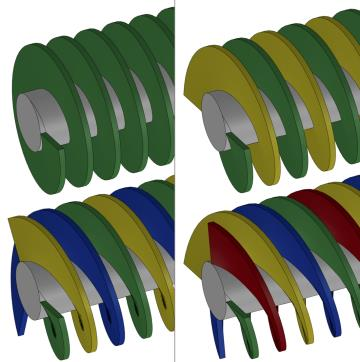 |
|||
| 100 | style="width:1.80069in;height:1.81069in" />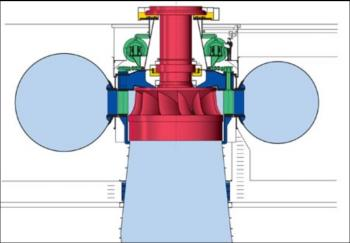 |
|||
| 101 | style="width:1.75333in;height:1.21667in" />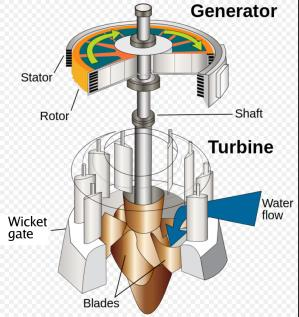 |
|||
| 102 | style="width:1.49653in;height:1.5875in" />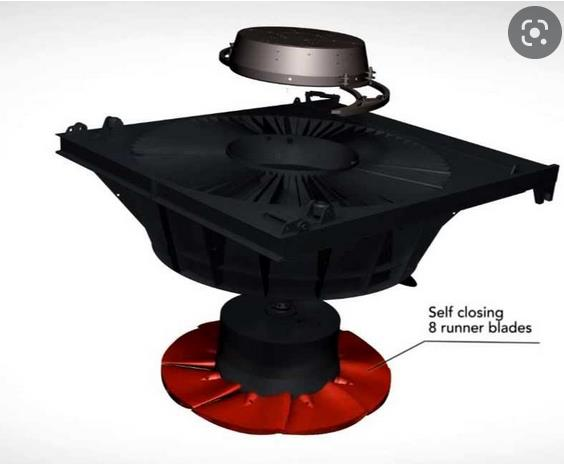 |
|||
| a03a35 | João Lopes | 2025-03-13 12:20:37 | 103 | |
| 104 | > 3 |
|||
| 105 | ||||
| 95b863 | João Lopes | 2025-03-13 12:39:27 | 106 | |
| a03a35 | João Lopes | 2025-03-13 12:20:37 | 107 | |
| 108 | > *Table* *1* *:* *Types* *of* *turbine* |
|||
| 109 | ||||
| 110 | **Choice** **of** **Turbine** **Type** |
|||
| 111 | ||||
| 112 | Each type of turbine has its advantages depending on the operating |
|||
| 113 | conditions, and the main objective is always to use the equipment that |
|||
| 114 | presents the best efficiency for the place where it is installed. |
|||
| 115 | Furthermore, the choice of turbine type is also influenced by the |
|||
| 116 | turbine speed, that is, by the number of revolutions per minute of the |
|||
| 117 | generator driven by theturbine.It isalso worthnotingthat theturbines can |
|||
| 118 | be mountedin different positions,with theaxisvertical, horizontal or |
|||
| 119 | even inclined to the vertical in order to satisfy the requirements of |
|||
| 120 | generated power, water level and space limitations. |
|||
| 121 | ||||
| 459d06 | João Lopes | 2025-03-13 12:25:49 | 122 | 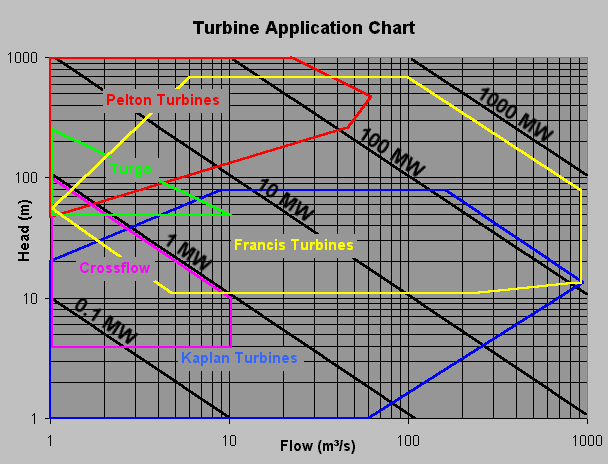 |
| 123 | ||||
| a03a35 | João Lopes | 2025-03-13 12:20:37 | 124 | > *Figure* *2* *:* *Turbine* *application* *chart* |
| 125 | > [*<u>link</u>*](https://en.wikipedia.org/wiki/Water_turbine) |
|||
| 126 | ||||
| 127 | The specific speed of a turbine is given by the manufacturers, and |
|||
| 128 | refers to the point of maximum efficiency, it is the best parameter to |
|||
| 129 | choose a turbine when conditions of flow and head are established. This |
|||
| 130 | allows accurate calculations of turbine performance for a range of head |
|||
| 131 | and flow rates. It can be defined as the speed of an ideal similar |
|||
| 132 | turbine that would produce one unit of power for one unit of head. |
|||
| 133 | ||||
| 459d06 | João Lopes | 2025-03-13 12:25:49 | 134 | 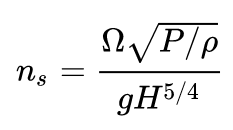 |
| 135 | ||||
| a03a35 | João Lopes | 2025-03-13 12:20:37 | 136 | > 4 |
| 137 | ||||
| 138 | IIP Homework n°1 with : |
|||
| 139 | ||||
| 140 | Ω: angular velocity (rad/s) P: power (W) |
|||
| 141 | ||||
| 142 | The efficiency of a turbine is given by the ratio between the mechanical |
|||
| 143 | power provided by the turbine and the existing power in the fluid, |
|||
| 144 | provided by the hydraulic energy, depending on several variables: |
|||
| 145 | ||||
| 146 | > • Flow |
|||
| 147 | > |
|||
| 148 | > • Existing losses • Turbine power • Manufacturer • Mounting shaft • |
|||
| 149 | > Among others |
|||
| 150 | ||||
| 151 | However, hydraulic and mechanical losses are the main causes for the low |
|||
| 152 | efficiencies in these equipment, and the efficiency of each equipment |
|||
| 153 | must be maximized according to the conditions in which it will operate |
|||
| 154 | (flow and losses). The typical efficiencies at which a turbine operates |
|||
| 155 | vary between 80% and 95%, depending on the flow rate as you can see on |
|||
| 156 | graphs identical to the one shown in Figure 2 \[3\]. |
|||
| 157 | ||||
| 158 | **Advantages** **of** **Using** **Hydraulic** **Energy** |
|||
| 159 | ||||
| 160 | > • Hydraulic energy, a renewable energy source, is a “clean” energy, |
|||
| 161 | > because it does not pollute the air and water like power plants that |
|||
| 162 | > use fossil fuels as a source of energy; |
|||
| 163 | > |
|||
| 164 | > • Hydraulic energy is available when it is needed, and engineers can |
|||
| 165 | > control water flows through turbines to produce electricity; |
|||
| 166 | > |
|||
| 167 | > • Hydraulic power stations create large reservoirs (dams) that |
|||
| 168 | > contribute to the supply of water for public access and flood control; |
|||
| 169 | > |
|||
| 170 | > • Energy production involves low costs; |
|||
| 171 | > |
|||
| 172 | > • They work for decades with little maintenance, not requiring much |
|||
| 173 | > investment to be maintained \[4\]. |
|||
| 174 | ||||
| 175 | **Disadvantages** **of** **Using** **Hydraulic** **Energy** |
|||
| 176 | ||||
| 177 | > • Hydraulic power stations can be affected in times of drought and |
|||
| 178 | > cannot produce electricity. |
|||
| 179 | > |
|||
| 180 | > • The new hydraulic power stations impact the local environment, |
|||
| 181 | > destroying ecosystems. |
|||
| 182 | > |
|||
| 183 | > • Fish populations can be affected, as they can no longer migrate |
|||
| 184 | > upstream to spawn, or downstream to go to the ocean \[4\]. |
|||
| 185 | ||||
| 186 | **Tidal** **Turbines** |
|||
| 187 | ||||
| 188 | From the end of the 19th century, some scientists had the idea of using |
|||
| 189 | the mechanical energy of ocean currents, but it is only since the |
|||
| 190 | beginning of the 21st century that this source of energy has begun to be |
|||
| 191 | studied more seriously: And tidal turbines were born. |
|||
| 192 | ||||
| 193 | > 5 |
|||
| 194 | ||||
| 195 | IIP Homework n°1 |
|||
| 196 | ||||
| 197 | Tidal energy is often compared to wind energy because of its appearance |
|||
| 198 | and mode of operation: Concretely, a tidal turbine is composed with a |
|||
| 199 | rotor, this is the rotating part, with a propeller made up of blades, |
|||
| 200 | with a diameter between 10 and 20 m, all mounted on a shaft/stator, the |
|||
| 201 | fixed part. \[5\] |
|||
| 202 | ||||
| 203 | The installation of a tidal turbine can be carried out: |
|||
| 204 | ||||
| 205 | > • On a mast or on a tripod which allows the tidal turbine to be placed |
|||
| 206 | > on the seabed. |
|||
| 207 | > |
|||
| 208 | > • If the tidal turbine is placed facing an average sea current of 2.5 |
|||
| 209 | > m/s, i.e. 5 knots, because the tidal turbine operates at full power |
|||
| 210 | > from 4 knots. |
|||
| 211 | > |
|||
| 212 | > • If the tidal turbine has a current interception surface of around |
|||
| 213 | > 300 meters. |
|||
| 214 | ||||
| 215 | The operation of a tidal turbine can be broken down as follows: |
|||
| 216 | ||||
| 217 | > 1\. The sea current causes the rotation of the blades of the |
|||
| 218 | > propeller, drives a turbine which generates a mechanical movement. The |
|||
| 219 | > turbine in both directions of the sea current. |
|||
| 220 | > |
|||
| 221 | > 2\. The rotation of the turbine drives an alternator, which will |
|||
| 222 | > convert mechanical energy into electricity. 3. This electricity in the |
|||
| 223 | > form of alternating current is then transported by cables to the |
|||
| 224 | > surface. |
|||
| 225 | > |
|||
| 226 | > 4\. The current is then transformed by a converter to be sent to the |
|||
| 227 | > electrical network. |
|||
| 228 | ||||
| 229 | || |
|||
| 230 | || |
|||
| 231 | || |
|||
| 232 | || |
|||
| 233 | || |
|||
| 234 | || |
|||
| 235 | ||||
| 236 | > *Table* *2* *:* *Tidal* *turbines* *advantages* *and* *limits* *\[6\]* |
|||
| 237 | ||||
| 238 | **Au** **Portugal** |
|||
| 239 | ||||
| 240 | In 2019, Portugal had 7,193 MW of hydroelectric power plants, i.e. 2.9% |
|||
| 241 | of European hydroelectric installed capacity and 0.5% of the world |
|||
| 242 | total, 19.1% of the country's total electricity production. Its |
|||
| 243 | production reached 10.6 TWh, or 1.6% of the European total, far behind |
|||
| 244 | Norway (125.8 TWh), France (63.6 TWh) or Spain (26.4 TWh). |
|||
| 245 | ||||
| 246 | In March 2018, renewable energies produced 100% of electricity |
|||
| 247 | consumption, including 55% for hydroelectricity in Portugal. \[7\] |
|||
| 248 | ||||
| 249 | > 6 |
|||
| 250 | ||||
| 459d06 | João Lopes | 2025-03-13 12:25:49 | 251 | 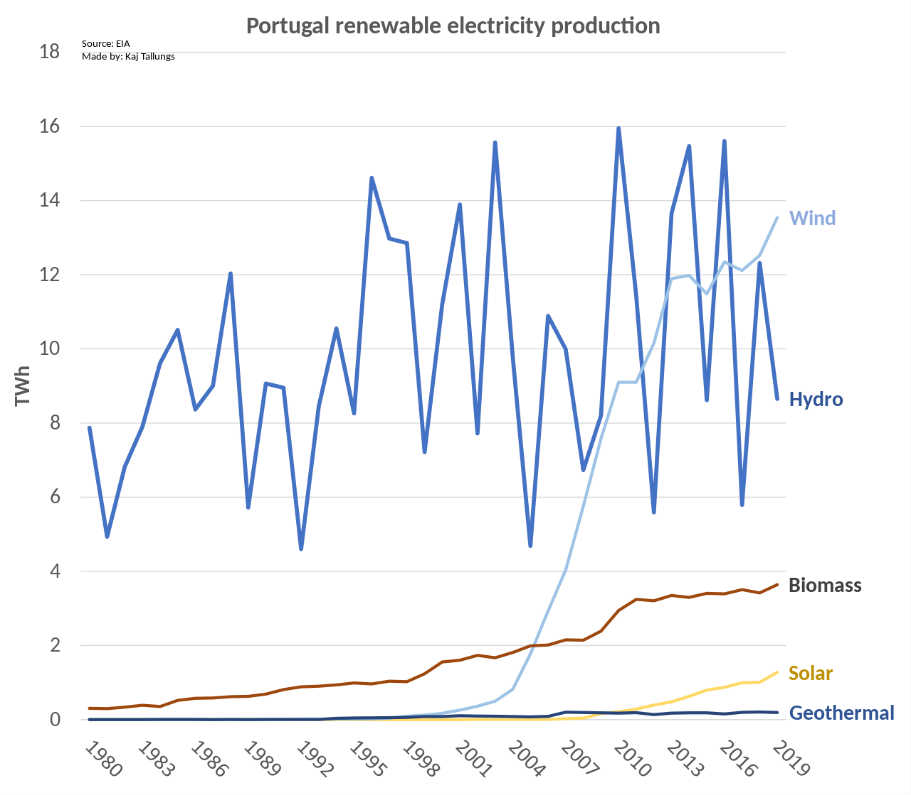 |
| a03a35 | João Lopes | 2025-03-13 12:20:37 | 252 | |
| 253 | > *Figure* *3* *:* *Portugal* *renewable* *electricity* *productio*[*n* |
|||
| 254 | > *<u>link</u>*](https://en.wikipedia.org/wiki/Energy_in_Portugal) |
|||
| 255 | ||||
| 256 | Hydroelectric power stations in the country: |
|||
| 257 | ||||
| 258 | > • The Frades II (780 MW) and Foz Tua (270 MW) pumped storage power |
|||
| 259 | > plants were comissioned in 2017. The Frade II project is one of the |
|||
| 260 | > main pumped storage projects in Europe. This project was added to the |
|||
| 261 | > cascade of hydroelectric works Cavado-Rabagao, in the north of the |
|||
| 262 | > country. |
|||
| 263 | > |
|||
| 264 | > • The Alqueva dam in the Alentejo created the largest artificial lake |
|||
| 265 | > in Western Europe and was one of the country's biggest investments. |
|||
| 266 | > This hydroelectric plant, commissioned in 2004, had a power of 518 MW |
|||
| 267 | > in 2013. |
|||
| 268 | > |
|||
| 269 | > • The Aguieira dam, on the Mondego river, was commissioned in 1981, it |
|||
| 270 | > has an installed capacity of 270 MW with 3 groups of reversible |
|||
| 271 | > Francis turbines. |
|||
| 272 | > |
|||
| 273 | > • The Douro hydroelectric development has 6 power stations with a |
|||
| 274 | > total installed capacity of 3,161 MW. The most important is that of |
|||
| 275 | > the Aldeadávila dam, inaugurated in 1963, it has a power of 1,140 MW. |
|||
| 276 | > It is the most powerful power plant in Spain and Portugal. |
|||
| 277 | > |
|||
| 278 | > • On December 19, 2019, EDP and Engie sign launch the construction of |
|||
| 279 | > six dams. These six dams, with a total capacity of 1.7 GW, are now in |
|||
| 280 | > the Douro Valley. EDP therefore remains the leader in hydroelectric |
|||
| 281 | > energy in Portugal with a market share of 65% in the country. |
|||
| 282 | ||||
| 459d06 | João Lopes | 2025-03-13 12:25:49 | 283 | 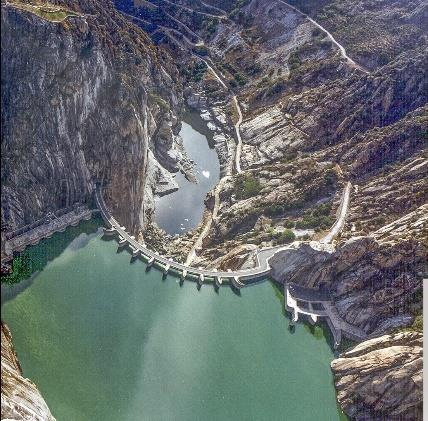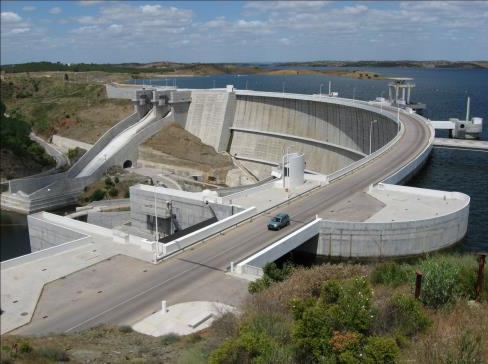 |
| 284 | ||||
| a03a35 | João Lopes | 2025-03-13 12:20:37 | 285 | *Picture* *1* *:* *The* *Alqueva* *dam* *in* *the* *Alentejo* *(* *518* |
| 286 | *MW)* *Picture* *2* *:* *The* *Aldeadávila* *dam* *in* *the* *Duoro* |
|||
| 287 | *(1* *140* *MW)* |
|||
| 288 | ||||
| 289 | > 7 |
|||
| 290 | ||||
| 291 | IIP Homework n°1 |
|||
| 292 | ||||
| 293 | **Some** **Hydraulic** **Turbine** **Manufacturers** |
|||
| 294 | ||||
| 295 | There are several manufacturers of hydraulic turbines, namely Voith, |
|||
| 296 | Hacker, HISA, Watec-Hydro e.K., among many others that can be found on |
|||
| 297 | the following website: [<u>Manufacturers of Hydraulic |
|||
| 298 | Turbines</u>.](https://www.industrystock.es/es/empresas/Tecnolog%C3%ADas-de-accionamiento/Tecnolog%C3%ADas-de-turbinas/Turbinas-hidr%C3%A1ulicas) |
|||
| 299 | ||||
| 300 | **References** Hydraulic Turbine : |
|||
| 301 | [<u>\[1\]</u>](https://en.wikipedia.org/wiki/Water_turbine) |
|||
| 302 | [<u>\[2\]</u>](https://pt.wikipedia.org/wiki/Turbina_hidr%C3%A1ulica) |
|||
| 303 | ||||
| 304 | \[3\] [<u>Tipos de |
|||
| 305 | Turbina</u>](http://www.antonioguilherme.web.br.com/Arquivos/turb_hidro.php) |
|||
| 306 | ||||
| 307 | \[4\] [<u>Vantagens e Desvantagens da Energia |
|||
| 308 | Hidráulica</u>](http://www.envirothonpa.org/documents/19bHydropowerAdvantagesandDisadvantages.pdf) |
|||
| 309 | ||||
| 310 | \[5\] [<u>Tidal |
|||
| 311 | turbines</u>](https://www.encyclopedie-energie.org/les-hydroliennes/) |
|||
| 312 | ||||
| 313 | \[6\] [<u>Tidal Turbines |
|||
| 314 | historic</u>](https://fr.wikipedia.org/wiki/Hydrolienne#Historique) |
|||
| 315 | ||||
| 316 | \[7\] [<u>Hydraulic in |
|||
| 317 | Portugal</u>](https://en.wikipedia.org/wiki/List_of_hydroelectric_power_stations_in_Portugal) |
|||
| 318 | ||||
| 319 | > 8 |
